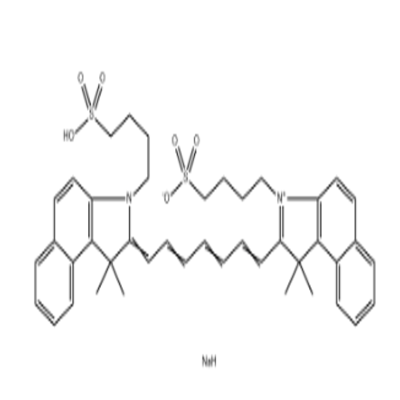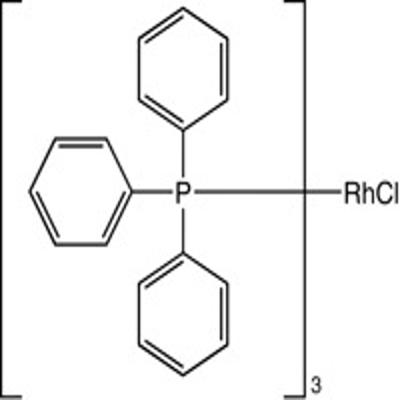What do payers think of real world evidence for rare diseases?
-
Last Update: 2019-12-05
-
Source: Internet
-
Author: User
Search more information of high quality chemicals, good prices and reliable suppliers, visit
www.echemi.com
Drug R & D, application, review, approval, post marketing supervision and reimbursement constitute a continuum The final consumer of drugs is patients; patients cannot use drugs without payers When rare diseases, payers and real world evidence (RWE) are focused together, what are the successful RWE cases in orphan drug research and development? What kind of opportunities and difficulties do you face? Let's take a look at the research results of European and American payers Syneos Health recently released a report entitled real world value: promoting payer understanding of RWE in rare disease According to syneos health's latest report, while there is growing concern about the use of real world evidence RWE in the design, testing, and review of rare disease therapies, what happens when payers make reimbursement and prescription decisions? Syneos health conducts research on payers, drug developers, regulatory experts and patient rights organizations in the United States and Europe by means of communication research, and studies the generation and use of RWE According to the report, respondents in the United States seem to know more about RWE Although 55% of us payers said they were familiar with the RWE terms, they said the relevant terms were not widely used by the relevant agencies 37% of European payers surveyed said RWE terms were not widely used In addition, although 60% of US respondents said that RWE can provide robust data in reality, only 42% of European respondents said that RWE reflected the reality All US payers interviewed noted a lack of standardization and interoperability between different EMRs More than half of the respondents said the lack of standardization and interoperability was the biggest constraint to adopting RWE By contrast, only 34% of European respondents said the biggest problem was lack of standardization The acceptance of RWE varies greatly in different European countries In Italy and Spain, RWE can influence payer decisions at the national and local levels However, in Germany, the payers question the validity of RWE from pharmaceutical companies The report highlights a disconnect in the focus of payers, regulators and pharmaceutical companies Part of the reason is that rare diseases rank low on payers' budgets In addition, most of the US payers interviewed regard RWE as a tool used in label expansion or post market supervision; the relevant respondents do not think that RWE and real world data can be used to determine the safety and effectiveness of new products Alistair MacDonald, CEO of syneos health, said in a statement that relevant research shows that payers are willing to use RWE, but must bridge the knowledge gap of RWE effectiveness and value and improve the drug access of patients with rare diseases "Feedback from stakeholders shows that payers need to work together and have well structured exercises and standard setting so that they can move forward in parallel with other industry stakeholders The key is dialogue Now is the right time "Although in the field of rare diseases, the payers are different from the industry and regulators around RWE participation, as long as the regulators and industry groups pay attention to the concerns of payers and further deepen their understanding, there will be no obstacle." The reality is that regulators are increasingly encouraging the use of RWE FDA has issued official guidelines to clarify and answer questions about data sources, data generation, effectiveness, and practicality Dr Scott Gottlieb, former FDA director, has been advocating RWE Recently, at the meeting of oncology care organized by the National Journal of managed care, Dr Gottlieb believed that the use of RWE in drug approval would present a faster acceleration trend Including RWES from EMR and Medicare claim data allows regulators to "fill in gaps." Dr Gottlieb said that when used to evaluate rare diseases or other unmet medical needs, strict randomization requirements can even be removed by using RWE In December last year, Dr Gottlieb, then director of the FDA, elaborated on RWE in the framework of FDA's real world evidence program released by the FDA This document describes how FDA will implement congressional directives under the 21st century cures act Congress authorized the FDA to invest $50 million in a database of at least 10 million patients, which means the FDA must justify the use of this investment Dr Gottlieb believes that this is a real turning point for the use of RWE, which means that FDA has the obligation to find out how to use these actual data to answer regulatory questions For RWE, although FDA is not fully clear, Dr Gottlieb said that the approval of imatinib's newer indications is based on the evidence currently known as RWE He said changes had taken place and that regulators would be responsible for integrating evidence into the decision-making process when the sponsor submitted an application using electronic medical records or insurance claim data "If you open a door, you will change the situation." Innovative research methods such as practical clinical trial, single arm study and synthetic trial are expected to change the research of biological drugs, especially in rare diseases Drug developers and regulators in Europe and the United States are expanding the use of these research models These research models rely on RWES derived from natural history, registries, patient records, prescriptions, and insurance claim databases However, despite the expansion and advancement of research, market access for rare diseases is still limited, and even patients in the United States and Europe often encounter delays and other obstacles U.S payers still insist on almost all rare disease indications have been approved treatment drugs In Europe, even after a breakthrough drug is approved, it often takes years to consider whether to reimburse it Syneos health's findings show that payers do not fully understand or value RWE when making reimbursement and prescription set decisions Such findings may help to explain some of the entry barriers faced by patients with rare diseases and families Research results show that many payers are reluctant to accept RWE based statements or health economics forecasts when rare diseases are involved, and the sponsor provides these statements and forecasts in the file Part of the reason for this is that these payers focus on treatment areas such as cancer, diabetes and cardiovascular disease, which account for a large part of the pharmacy and medical budget On the other hand, even if the payer has been using RWE in its claim database, the payer often does not pay close attention to how the regulatory application of RWE develops and changes As a result, the internal processes followed by the payer's pharmacy and therapeutics committee did not coincide with the development of RWE in drug regulatory application Most of the US payers interviewed associated terms such as "RWD" and "RWE" with post market surveillance, or health economics outputs Research (heor), or, in some cases, with the filing of label extension applications These payers do not believe that RWE can answer questions about the safety and effectiveness of new drugs on the market Although European payers are more familiar with RWE terms, they also raise many questions and doubts What can pharmaceutical companies do to help narrow the gap in understanding? Moreover, is there any way for the pharmaceutical industry to address payers' concerns about RWE so that market access can keep pace with research innovation and regulatory changes? By taking the following steps, drug developers may be able to narrow the understanding gap of RWE and help improve market access for patients and families with rare diseases In syneos health's research, the payer's response shows that there is only a vague relationship with RWE, and there is almost no sense of urgency to use RWE Through industry wide efforts, drug developers should standardize RWE vocabulary and familiarize payers with its utility and advantages In addition, the FDA's health care economic information (hcei) guidelines allow for a broader dialogue between pharmaceutical companies and payers on topics such as RWE In order to take full advantage of these new opportunities, pharmaceutical companies must improve their in-depth understanding of hcei guidelines According to the regulations of RWE Industry joint working group, researchers engaged in prospective and retrospective observation tests shall publish relevant public websites on public websites before analysis, and prove how to ensure the results are consistent with the original scheme Researchers should also create opportunities for other researchers to replicate research results and respond publicly to and address any criticism raised In the design of a single arm bid opening clinical study of rare disease treatment drugs in the United States, the key is to use the historical control arm Qualification criteria for the historical control arm should be clearly defined, including product registration and disease, or conditional registration and medical service registration The registration authority should not only help to accumulate data, but also prove the long-term commitment of the sponsor to the patient rights group In general, the drugs that doctors prescribe to patients must be those that have been approved by the drug regulatory agency after the completion of clinical trials Patients can obtain the right to use drugs through the expanded access program or through sympathetic use; the drugs involved are in phase 1, phase 2, phase 3 clinical trials, or complete phase 3 clinical trials, but have not been approved by FDA By expanding the use plan and compassionate use plan, in addition to supporting patient rights groups, it can also generate vertical data that may be of interest to payers The FDA's recently released RWE guidelines specifically list some examples, including supporting RWE composed of historical response rate data from chart review, extended use, or other specific practices For the vast majority of clinical trial applicants, it has long been the norm to seek scientific advice and support from drug regulatory agencies before conducting clinical trials At the early stage of the development process, this spirit of collaboration should also be carried forward to the activities of the participating payers A kind of
This article is an English version of an article which is originally in the Chinese language on echemi.com and is provided for information purposes only.
This website makes no representation or warranty of any kind, either expressed or implied, as to the accuracy, completeness ownership or reliability of
the article or any translations thereof. If you have any concerns or complaints relating to the article, please send an email, providing a detailed
description of the concern or complaint, to
service@echemi.com. A staff member will contact you within 5 working days. Once verified, infringing content
will be removed immediately.







